Akita Shepherd Dog Breed
The Akita Shepherd is a mixed breed dog, a cross between the Akita Inu and the German Shepherd. This breed has caught the attention of dog lovers and those looking to adopt a new pet.
The Akita Shepherd is known for its sturdy physique and deep loyalty, inherited from its parent breeds. These dogs are praised for their protective instincts and the close relationships they form with their owners.
However, owning an Akita Shepherd comes with its own set of challenges. Owners should be well-informed and ready to meet these dogs’ physical and mental needs.
Understanding the Akita Shepherd’s personality, how to care for them, and whether they fit your home is essential. Prospective owners must consider the distinctive qualities that make this breed stand out among other dogs.
Key Takeaways
- Akita Shepherds are loyal, protective, and strong.
- These dogs require committed owners for their care.
- They stand out with unique qualities among canines.
Quick Facts
Akita Shepherds combine the best of the Akita Inu and German Shepherd breeds. They are known for their medium energy and ability to adapt, making them excellent watchdogs for all kinds of homes. Whether a small apartment or a large house, their calm yet vigilant nature fits right in. These large dogs can prosper in many different settings.
Akita Shepherds are an intelligent option for those new to dog ownership because they are trainable and can bounce back from mistakes made during training. They have a broad range of sensitivity levels; some are more laid-back, making them perfect for busy homes. On the other hand, the more active ones will need plenty of exercise and mental challenges. Matching your lifestyle with the dog’s energy needs is essential to ensure you’re a good fit.
Keeping up with regular health care, grooming, and exercise is crucial for the health of Akita Shepherds.
Akita Shepherd Pictures
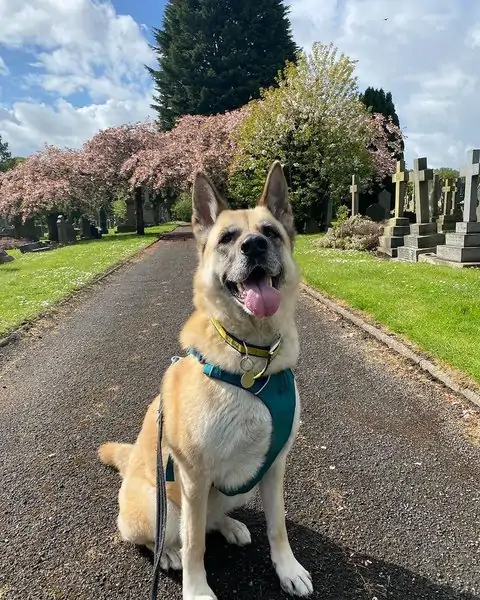
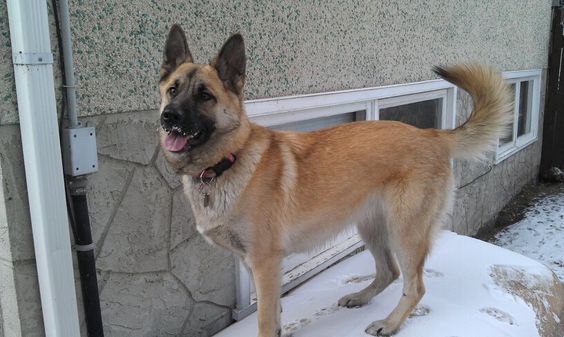

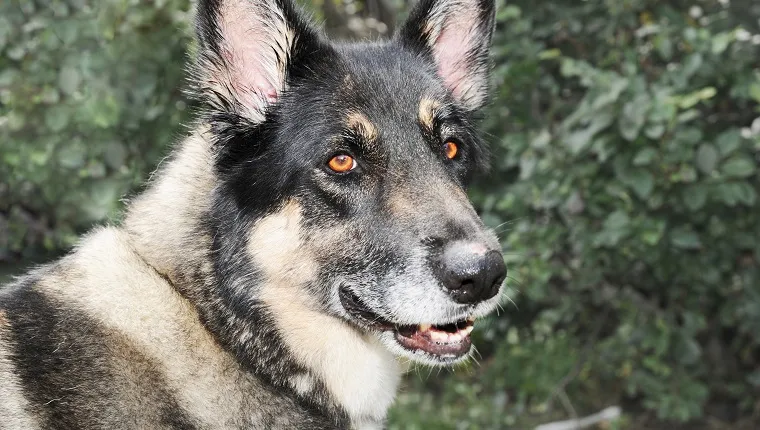
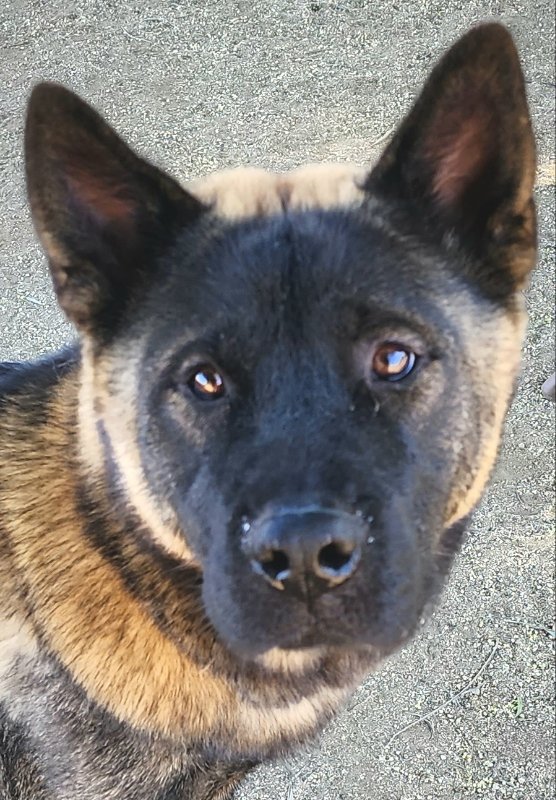
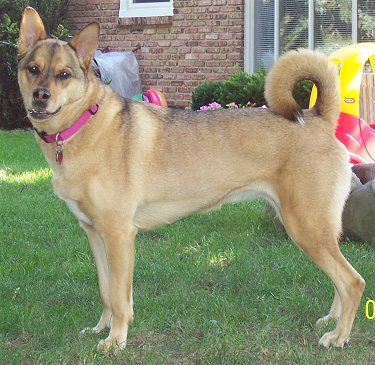
Overview
The Akita Shepherd, a designer crossbreed resulting from the intentional mixing of the Akita Inu and German Shepherd, exhibits a blend of traits that make it a distinctive and versatile companion.
Originating in the 1950s, the Akita Shepherd combines the independent and protective nature of the Akita with the loyalty and intelligence of the German Shepherd, resulting in a mixed breed of shepherds that is both formidable and faithful.
Not recognized by the American Kennel Club, this hybrid requires diligent maintenance, including regular grooming of its dense coat to manage shedding. Weighing up to 85 pounds and standing as tall as 25 inches, the Akita Shepherd necessitates ample exercise to maintain its robust stature.
Its strong bonding capacity renders it suitable for various familial structures, from individuals to larger households.
Owning an Akita Shepherd: Key Traits
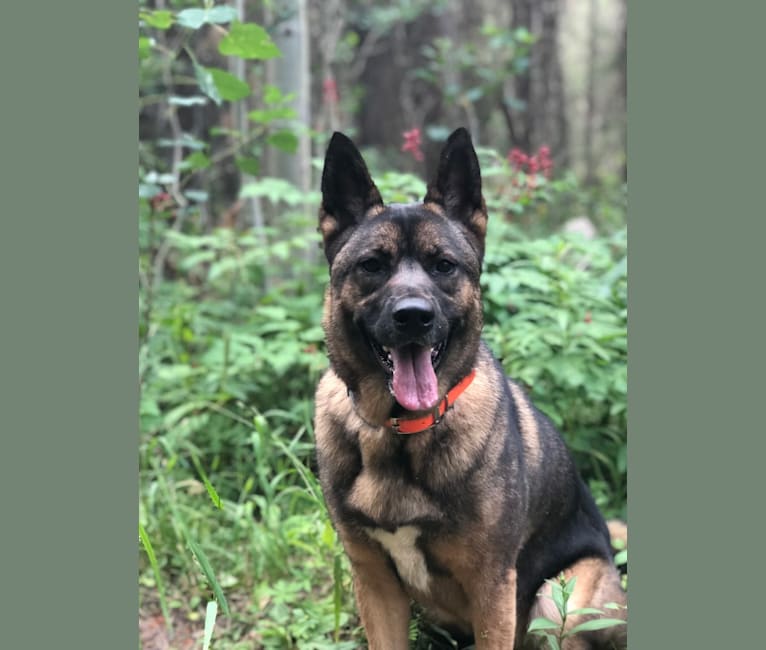
When discussing the Akita Shepherd, it’s critical to highlight the attributes that characterize this mixed breed’s ability to adapt to various living situations, its sensitivity, exercise needs, and inherent breed characteristics. This crossbreed combines the qualities of the Shepherd and the Akita. Introducing them to different people and environments early on promotes a stable temperament. They have a robust build but are prone to gaining extra weight without a careful diet and regular physical activity. Keeping an eye on their health issues is crucial to their overall welfare.
| Trait Category | Description | Emotional Appeal |
|---|---|---|
| Adaptability | Can handle some time alone but prefers the company | Ensures security and loyalty |
| Sensitivity | Socialization is critical to a well-behaved dog | Draws on our compassion |
| Exercise Needs | Socialization is critical to a well-behaved dog | Reflects their energy and zest for life |
| Breed Characteristics | Socialization is key to a well-behaved dog | Encourages responsible pet care |
| Health | Be mindful of their diet and potential health problems | Inspires attentiveness to their needs |
The Akita Shepherd’s adaptability means they can be happy living in a spacious home or a cozy apartment as long as their needs are met. They offer a strong sense of security and are known for their unwavering loyalty. Although they can tolerate being alone for a bit, they’re happier with company, which makes us feel more empathetic towards them. They have a lot of energy and must be active, symbolizing their vigor and zest for life.
Early socialization is crucial for this breed to develop balanced behavior, highlighting the importance of responsible pet ownership. When it comes to their health, it’s vital to be proactive. Monitoring their food intake and being alert to health issues show we care and maintain a vigilant watch over our canine companions.
Origins and Development of Dog Breed
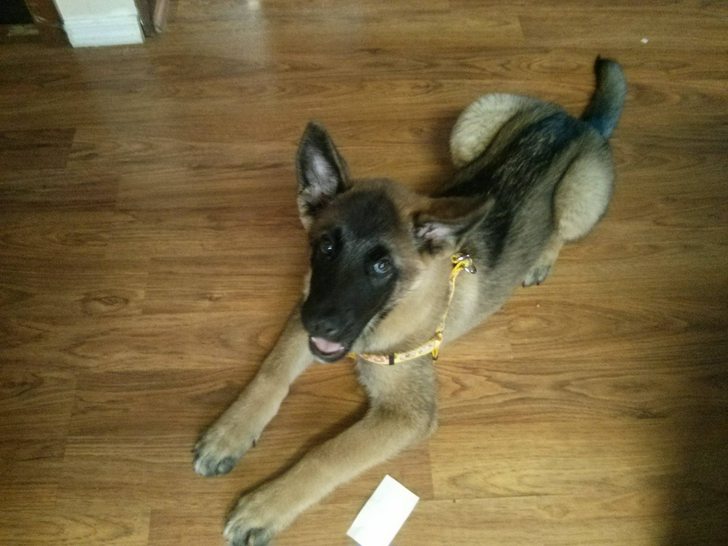
The Akita Shepherd represents a unique blend, born from carefully mixing the genes of the Akita Inu and the German Shepherd. This dog was first bred in the middle of the 20th century, starting a new line with a complex mix of characteristics. The combination of traits from both parent breeds has resulted in an Akita Shepherd that stands out in looks and behavior.
Ancestral Breed Fusion: The Akita Shepherd carries genetic traits from the Akita Inu and the German Shepherd.
Breeding Timeline: This mixed breed has roots in the middle of the 20th century and continues to be refined today.
Traits Inheritance: The Akita mix Shepherd inherits dominant and recessive traits from its two parent breeds.
Ancestral Breed Fusion
The Akita Shepherd emerged in the United States during the 1950s as a cross between the Akita Inu and the German Shepherd. It combines the strength and protective instincts of the Akita with the intelligence and herding skills of the German Shepherd.
Owners of Akita Shepherds should provide them with thorough training and socialization from a young age due to their alert and protective nature.
These dogs come with common health challenges in both parent breeds. It’s vital to stay on top of their health with regular vet visits. They also have a thick coat, which requires consistent grooming, especially during their shedding seasons, to keep them looking their best.
Breeding Timeline
The unique mix of the Akita and German Shepherd breeds has led to the creation of the Akita Shepherd. In the 1950s, breeders aimed to produce a loyal and protective dog in the United States. They crossed the robust Akita with the intelligent German Shepherd, resulting in the Akita Shepherd.
Although the American Kennel Club does not officially recognize this breed, it has won the hearts of many dog enthusiasts. This has led to the formation of rescue organizations dedicated to these dogs, which often need new homes because of their large size and the care their coats require.
Traits Inheritance
In the 1950s, breeders in the United States set out to combine the best features of the Akita and the German Shepherd. They wanted to create a new breed with both dogs’ size, protectiveness, and smarts. The Akita Shepherd was the result.
It’s a big dog with various coat patterns and a bold character. This breed is bright like the German Shepherd and independent like the Akita. They have a strong hunting instinct, so it’s best to train them early to avoid any problems.
However, the mix also comes with some health issues. Akitas and German Shepherds often have hip dysplasia, and the Akita Shepherd can get it too. This shows why breeders need to be careful and why these dogs need regular check-ups at the vet.
Best Dog Physical Dimensions
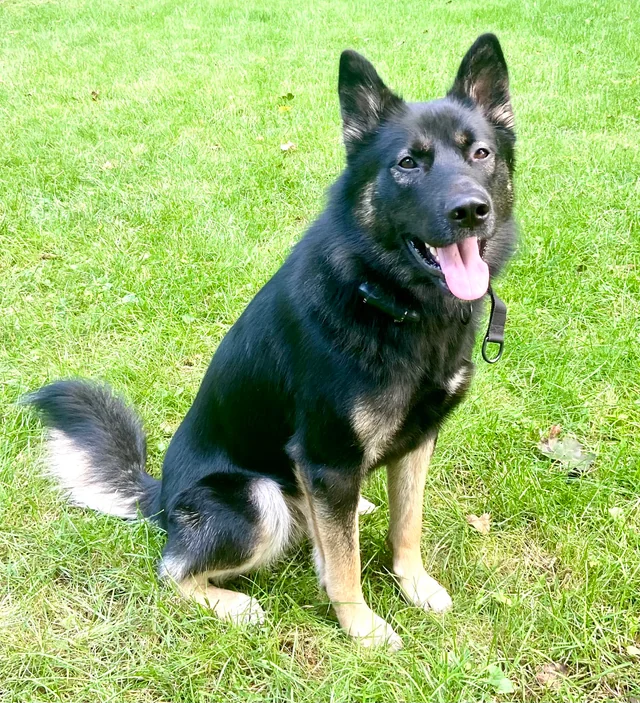
When assessing the Akita Shepherd, its size is critical in determining its suitability for different homes and jobs. This breed’s presence is shaped by its height and weight, muscular build, and the nature of its coat. These aspects are crucial for the dog’s abilities and health.
Height and Weight – Akita Shepherds vary in size, which relates to their work capabilities and stamina.
Body Build – Their robust and muscular body supports their power and quickness.
Coat and Color – The coat’s condition and color influence the dog’s appearance and comfort in various weather conditions.
In reviewing the Akita Shepherd, it’s essential to look at its size, which affects how well it can adapt to different spaces and tasks. The breed’s physical presence is determined by its height, weight, solid build, and coat features. These elements are vital for the dog’s performance and well-being.
Height and Weight – The Akita Shepherd comes in various sizes, which can tell you a lot about its ability to work and endurance.
Body Build – This breed is known for its robust and muscular body, critical to its strength and graceful movement.
Coat and Color – The health and upkeep of the coat and its color play a part in the dog’s looks and how well it can handle different weather.
Height and Weight
The Akita Shepherd is a large and muscular dog breed, typically measuring from 24 to 28 inches in height and weighing 75 to 120 pounds. This mix of Akita brings together the considerable size of its parent breeds, making them stand out among more prominent canine companions. They possess a sturdy build and a thick coat, further accentuating their robust appearance.
Generally, male Akita Shepherds are heavier, indicating a precise size difference between the sexes. The breed’s size is an asset to their strength and endurance.
People considering an Akita Shepherd should have enough space for a big dog and be ready to provide plenty of exercise and activities to keep them healthy and happy.
Body Build
Akita Shepherds are large and robust, showcasing the best of their Akita and German Shepherd roots. They have broad shoulders and a sturdy body that highlights their strength.
Exercise and Grooming
These dogs need plenty of exercise, at least an hour daily, to stay healthy and happy. Their thick coat, which is neither too long nor too short, should be brushed often to handle the shedding of the changing seasons.
Mental Stimulation
Keeping their minds busy is essential because they’re so bright and have an instinct to herd. Without enough physical and mental activity, they might start misbehaving. It’s all about keeping this impressive and energetic breed in top form.
Coat and Color
Akita Shepherds display a beautiful array of coat colors, from the striking brindle to the deepest black. Their coats are of medium length and require regular grooming to keep them looking their best and to control the hair they shed with the changing seasons. The mix of colors such as white, silver, red, gray, brown, and sable adds to their visual charm. However, it also means they need consistent care.
Owners should use grooming tools to manage their shedding, especially when these dogs shed heavily or ‘blow’ their coats. A pin brush or a slicker brush works well to eliminate dead fur. Regular grooming is more than just about looks. It helps reduce the amount of allergens in the environment, which benefits people with allergies. Proper grooming is crucial for the dog’s well-being, highlighting the owner’s dedication to their pet’s care.
Lifespan Expectancy
Akita Shepherds typically live between 10 and 13 years. Their lifespan is greatly affected by genetics, the care they receive, and how their health is managed. These dogs need careful attention to avoid inherited health problems from their ancestors, Akita and German Shepherd mix.
Keeping them healthy involves regular check-ups, a good diet, and plenty of exercise. This helps build a strong and healthy dog, which may live longer.
Regular grooming and vet visits help catch health problems early. This can prevent more significant issues down the road. It’s also important to socialize and train these dogs early on. Using positive methods helps keep their minds sharp and their temperament stable. This reduces stress, which can also help them live longer, healthier lives.
Gender Size Differences
Male and female Akita Shepherds differ in size. Males are usually more prominent, with females being more petite. Female Akita Shepherds weigh between 75 and 120 pounds, and their height ranges from 24 to 28 inches.
Choosing between a male or female Akita Shepherd mix affects the household, as males need more room and have a more substantial presence. Both sexes respond well to consistent training, essential for their independent and protective traits.
Regular grooming and daily exercise are vital to maintaining their health.
Behavioral Traits
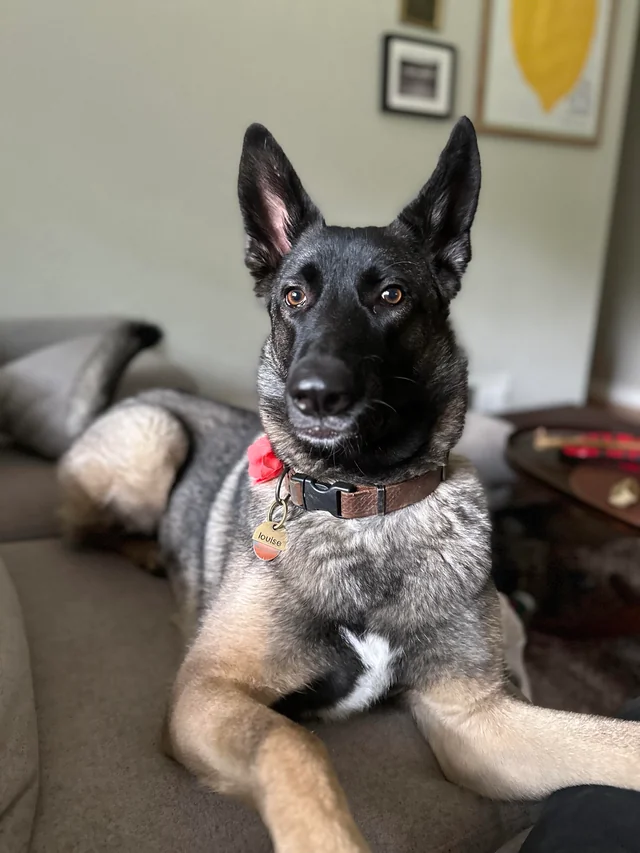
The behavioral traits of Akita Shepherds are a mix of their Akita and German Shepherd lineage, leading to a unique set of behaviors that need careful management. Owners must engage with several aspects of the dog’s actions to raise a stable and responsive companion. Here are essential points to focus on:
- Understanding Temperament: It’s critical to assess the natural disposition of the breed so you can tailor training to fit their unique personality.
- Controlling Prey Drive: Keeping the dog’s hunting instincts in check is essential to ensure peace around other pets or animals.
- Adequate Socialization: Early and consistent socialization is vital in helping the breed feel more comfortable with new people and reduce the chances of aggressive behavior.
Temperament Overview
Akita Shepherds are known for their protective and watchful nature, often as guardians for their homes and loved ones. These dogs epitomize loyalty and are always ready to defend their pack. They show a deep bond with their family but can be wary of people and animals they don’t know.
When it comes to kids they’re used to, Akita Shepherds are great, but they must be socialized from a young age to grow up well-rounded. Their smartness means they pick up on complex commands well, making them dependable pets.
Because of their active heritage, they need a lot of daily exercise and mental challenges to keep their energy in check.
Prey Drive Management
The Akita Shepherd is known for its loyalty and protective nature. However, they have a strong prey drive due to their hunting heritage. To keep peace with other pets and animals, it’s essential to manage this instinct.
Akitas Shepherds can chase other animals due to their hunting background. This makes managing their prey drive necessary, especially around other small dog. Teaching them how to interact from a young age can reduce aggression. Positive reinforcement training can help focus their attention and promote calm behavior. Regular mental and physical activity keeps their natural urges in check. Always supervise them to prevent chasing or hostility.
Akita Shepherd training should start early to curb their chase instincts. Positive reinforcement and regular exercise are crucial to managing their prey drive. This ensures they’re well-behaved around other animals. Always keep an eye on them to prevent any aggressive incidents.
Socialization Techniques
Starting to socialize with an Akita Shepherd at a young age is crucial for their self-assurance and social skill development. Introducing them to various settings and people early on can significantly improve their ability to adapt and interact.
Using positive reinforcement, rewarding the dog when it shows friendliness to people and other animals is beneficial. This method worked well when I trained my pet and is also widely advised for creating approachable family dogs.
Combining obedience training with structured activities helps reinforce good behavior and builds a strong bond between the dog and its owner. Consistent with the patient and kind instruction will help shape an Akita Shepherd that behaves correctly and adjusts easily to different social situations.
Obedience Training Essentials
Harnessing an Akita Shepherd’s sharp mind and strong will, obedience training is crucial for teaching them proper behavior. Starting training when they are puppies takes advantage of their natural learning ability, setting them up for success as grown dogs. Teaching basic commands like sit, stay, and come is critical to establishing rules and a clear pecking order in your relationship with your dog. Using rewards and praises works best with this breed, as they don’t respond well to harsh treatment. Customizing activities to match the Akita Shepherd’s endurance ensures they stay mentally and physically engaged, readying them for any distractions they might face in a place like a dog park.
This structured training approach is essential for behavior management and building a solid relationship with your dog.
Rules for a Harmonious Life with Your Akita Shepherd
To live harmoniously with an Akita Shepherd, obedience training is non-negotiable. Starting early in their life helps shape a well-behaved adult dog. Focusing on basic commands such as sit, stay, and come is vital to instill a sense of order and respect. Rather than scolding, always opt for positive reinforcement to encourage good behavior. The training should also consider the dog’s energy levels to keep them physically and mentally challenged. This helps manage their behavior and strengthens the bond with your Akita Shepherd.
Common Behavioral Issues
For a well-behaved Akita Shepherd, proper training is just the beginning. Addressing their common behavioral issues is also essential, as these stem from their instincts. These dogs are known for being excellent guard dogs, but they might feel anxious without enough mental and physical exercise. They have moderate energy and need daily activities to keep from getting restless.
If an Akita Shepherd doesn’t get enough to do, they might start showing destructive behaviors like chewing things they shouldn’t. An excellent way to prevent this is to give them chew toys, which can channel their herding instincts and stop them from biting your belongings.
Regular and consistent training is critical to managing their sharp alertness and ensuring their protective instincts are not problematic. Use a confident, positive way of training to encourage the behaviors you want to see.
Wellness Considerations of Shepherd Mix
When considering the overall wellness of an Akita Shepherd, it is essential to proactively address key health aspects to ensure a long and healthy life for the breed. An integrated approach to their care involves committing to regular health screening, preventative measures against common illnesses, and understanding their specific dietary and nutritional requirements.
Below is a concise enumeration of critical considerations owners should integrate into their pet care regimen:
- Health Screening Importance: Regular veterinary health screenings can detect early signs of hereditary conditions prevalent in the Akita Shepherd breed.
- Common Illnesses Prevention: A proactive approach to vaccinations, parasite control, and weight management can significantly reduce the risk of common breed-specific illnesses.
- Diet and Nutrition Essentials: Tailoring a diet that meets the energetic and developmental needs of the Akita Shepherd is paramount for maintaining optimal health.
Health Screening Importance
Regular vet visits are vital for Akita Shepherd dogs. These visits help catch and handle health issues early on, such as bloat, hip dysplasia, and elbow dysplasia. Early health screenings are essential for monitoring these genetic joint issues and preventing the development of arthritis.
In addition to joint health, maintaining moderate energy is crucial for Akita Shepherds. These dogs need regular exercise to avoid becoming overweight, which can worsen bone and joint problems.
Taking steps to groom and focus on joint health can also help prevent allergies and dry eye, which are common issues for this mix.
Common Illnesses Prevention
To protect an Akita Shepherd’s health, consistent vet check-ups and preventive care are crucial. These dogs are sturdy but need close monitoring for hip dysplasia and allergies. A healthy diet and regular physical activity help lower these health risks.
Grooming is vital for Akita Shepherds with long fur to avoid too much shedding and skin problems. Their coat requires careful maintenance for their overall health.
Proper training and socializing are essential to prevent behavior issues and help the dog fit nicely into a family. A good home environment that engages the dog is also crucial for their health.
Diet and Nutrition Essentials for Puppy and Adult
A well-rounded diet is crucial for the health and energy of an Akita Shepherd. These dogs thrive on high-quality food packed with proteins, fats, carbohydrates, vitamins, and minerals.
It’s essential to manage their portions to prevent overeating, which can lead to obesity and related health issues. Consistent feeding times help maintain a healthy metabolism and reduce stomach problems.
Since Akita Shepherds have thick fur, they need extra nutrients when cold. Ensure they drink plenty of water, especially after they exercise or when it’s hot.
Pros and Cons of Owning an Akita: Essential Maintenance Needs
Caring for an Akita Shepherd involves more than just the basics. It’s about a complete care routine crucial for their health and happiness. A well-planned approach to grooming, exercising, and health monitoring can help avoid breed-specific problems and improve the dog’s overall well-being.
Here are the core practices for keeping an Akita Shepherd healthy:
- Grooming is vital – set up a regular schedule to care for their coat and skin. Make sure they get enough exercise every day to match their energetic nature. Regular vet visits are essential for catching and treating any health issues early.
To maintain their coat, brush them at least twice a week. This breed has a thick double coat that sheds, so regular brushing will help manage this. Akitas and Shepherds are active dogs for exercise, so a long walk or play session each day is necessary to keep them fit and burn off energy. Regarding health, routine vet check-ups can catch problems like hip dysplasia, which is common in these breeds.
Grooming Routine Essentials
Maintaining an Akita Shepherd’s coat health is vital, which means sticking to a grooming schedule with weekly brushing and more frequent care during their intense shedding seasons. These dogs have medium-length coats in various colors and patterns, requiring a specialized grooming approach. The necessary steps for grooming an Akita Shepherd are designed to keep their coats clean, untangled, and mat-free.
Regular grooming keeps the dog looking good and helps check for skin issues, spot parasites early, and prevent skin problems.
A thorough grooming routine for these dogs also involves cleaning their ears daily, trimming their nails regularly, and caring for their teeth.
Keeping up with these tasks and visiting the vet for regular check-ups is vital to keeping an Akita Shepherd healthy and energetic.
Regular Exercise Regimen
A structured exercise regimen that includes at least one hour of physical activity per day is essential to ensure an Akita Shepherd’s optimal health and well-being. This breed requires a consistent daily routine to maintain its physical state and mental acuity.
The regular exercise regimen should be a mix of aerobic activities, such as walks or runs, and interactive play that allows the dog to engage both body and mind. Enabling the dog to run around in a secure backyard can offer additional opportunities for spontaneous exercise.
Incorporating mental stimulation into the regimen through obedience training or puzzle toys ensures the Akita Shepherd remains mentally sharp and fulfilled. Adjusting the intensity and variety of activities according to the dog’s energy levels is crucial for a balanced lifestyle.
Health Check Priorities
Regular visits to the vet are vital to keeping an Akita Shepherd healthy and catching issues early. These dogs especially need checks for hip dysplasia, a common problem in their breeds. Health screenings should include thorough joint exams to help prevent dysplasia from worsening.
Akita Shepherds have thick fur that needs careful grooming to avoid tangles and skin problems. So, checking their skin and coat is also crucial during health exams. Keeping their teeth clean, ears free of dirt, and nails trimmed helps prevent infections and keeps them in top shape.
Nutritional Diet Guidelines
A well-rounded diet, packed with protein and vital nutrients, is critical to maintaining the health of Akita Shepherds. These dogs need food that keeps their muscles strong and matches their high energy levels. It’s essential to oversee their food and water intake, especially how much they eat, to prevent obesity and joint issues like hip dysplasia.
Adding supplements such as glucosamine and chondroitin can help support joint health. It’s also crucial for these dogs to eat foods rich in omega-3 fatty acids to keep their thick coat shiny and their skin healthy. A diet with the right mix of vitamins and minerals will strengthen the Akita Shepherd’s immune system, meeting their overall nutritional needs.
Behavioral Training Tips
Training an Akita Shepherd effectively starts with setting up a consistent routine. This helps the dog understand what’s expected and strengthens their discipline. Having a regular training schedule helps the dog learn behaviors more quickly and easily.
When training, giving treats, and praising positive reinforcement works well to encourage good behavior.
Interactive toys and puzzles are great for keeping their sharp minds engaged and preventing boredom that can lead to misbehavior.
Socializing your dog early is critical to ensuring they’re comfortable around other animals and people.
Daily exercise is also necessary to help your Akita Shepherd burn off energy and stay healthy.
These training tips can help you raise a well-behaved dog and a fantastic furry companion.
Akita Shepherd Facts: Nutritional Requirements
The Akita Shepherd needs a well-thought-out diet to stay healthy and strong. This mixed breed thrives on a carefully adjusted diet with proper nutrient balance.
For an Akita Shepherd, a diet with the right mix of protein and fats is essential. This helps keep their muscles in good shape and supports their high energy levels while also helping to avoid weight gain.
Considering this breed’s specific health needs when planning their meals is essential. Tailoring their food can help avoid common issues like joint concerns and allergic reactions.
A diet rich in quality ingredients supports the overall health of an Akita Shepherd. Proper nutrition is the key to their vitality and well-being.
To keep them fit and prevent health problems, it’s critical to balance protein and fats in their meals. This ensures they have the energy for play and exercise while maintaining a healthy weight.
Understanding the Akita Shepherd’s health risks means you can adjust their diet accordingly. Providing the right food can help prevent common issues in this breed, ensuring a happier, healthier life.
Balanced Diet Essentials
To keep an Akita Shepherd in top health, they must eat a diet that includes all the necessary nutrients. This means they should get plenty of proteins, carbs, fats, vitamins, and minerals. A nutritious diet is vital to their growth and energy, keeping their immune system strong and their metabolism running smoothly.
Protein is essential for this breed to help build and repair muscles, which is critical for dogs known for their power and stamina. They also need the right amount of carbohydrates to fuel their active days. Healthy fats are essential for keeping their skin and coat in good condition.
It’s essential to feed them in the right amounts, which depends on their size, age, and how much exercise they get, to keep them from getting overweight. Regular check-ups with a vet will make sure their diet fits their unique needs, saving them a happy and hard part of the family.
Protein and Fat Content
For an Akita Shepherd, a diet with plenty of protein and a reasonable amount of fat is vital in keeping their muscles strong and energy levels up. These dogs have a robust build and are very active, meaning they need high-quality protein from sources like chicken, beef, or fish to keep their muscles in good shape and help them recover.
At the same time, having enough fat in their diet is vital to provide energy and essential fatty acids. These fats are important for keeping their skin healthy and their coat shiny.
The exact amount of protein and fat an Akita Shepherd needs can vary based on their activity, weight, and overall health. That’s why it’s a good idea to talk to a vet to get your dog’s diet right.
Special Dietary Considerations
Akita Shepherds often face health challenges like hip dysplasia and allergies, necessitating a tailored diet. To support their joint health, their meals should include glucosamine and chondroitin. Choosing ingredients that won’t trigger allergies is essential to prevent food-related issues.
Managing their calorie intake is vital to avoiding obesity, which these dogs can easily fall prey to. Their food should provide enough energy but in controlled portions to match their activity level and keep them from gaining too much weight.
A well-rounded diet is crucial to maintain their muscular physique and overall health. Regular check-ups with a vet can help tailor their diet effectively.
